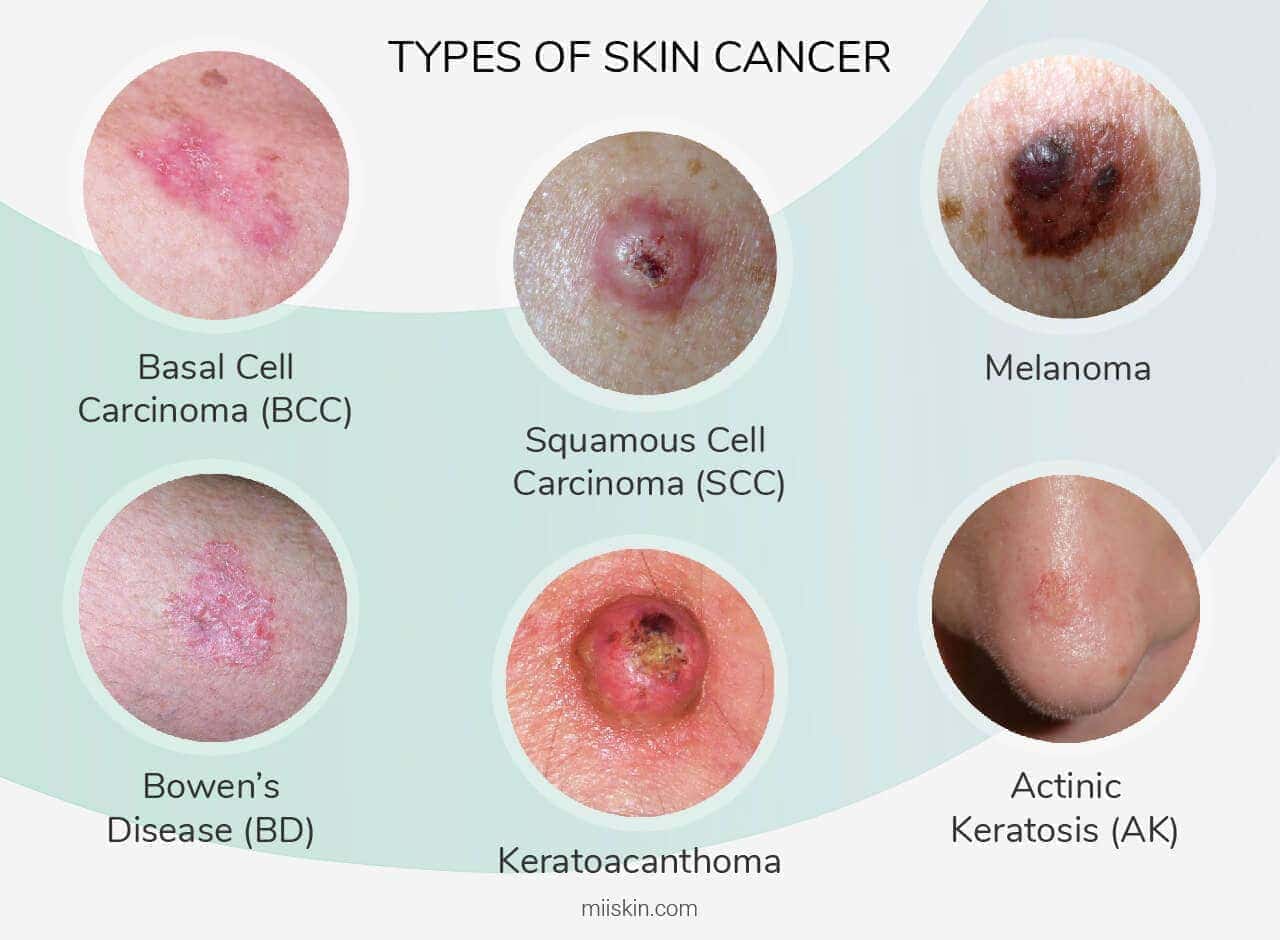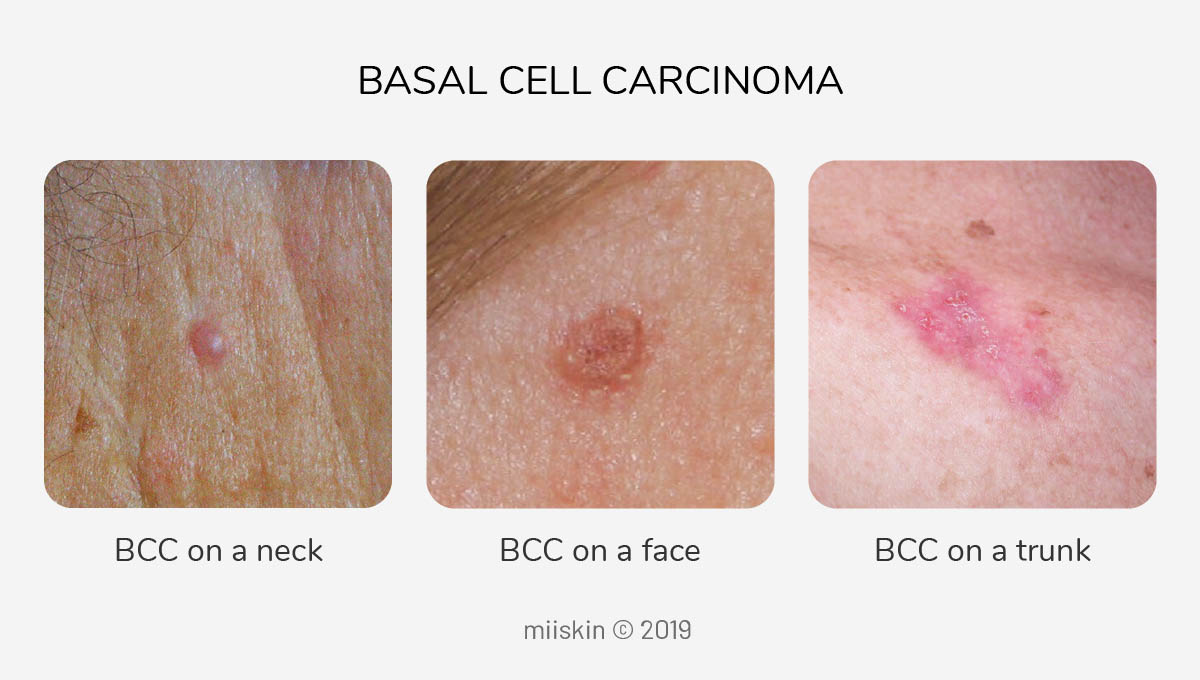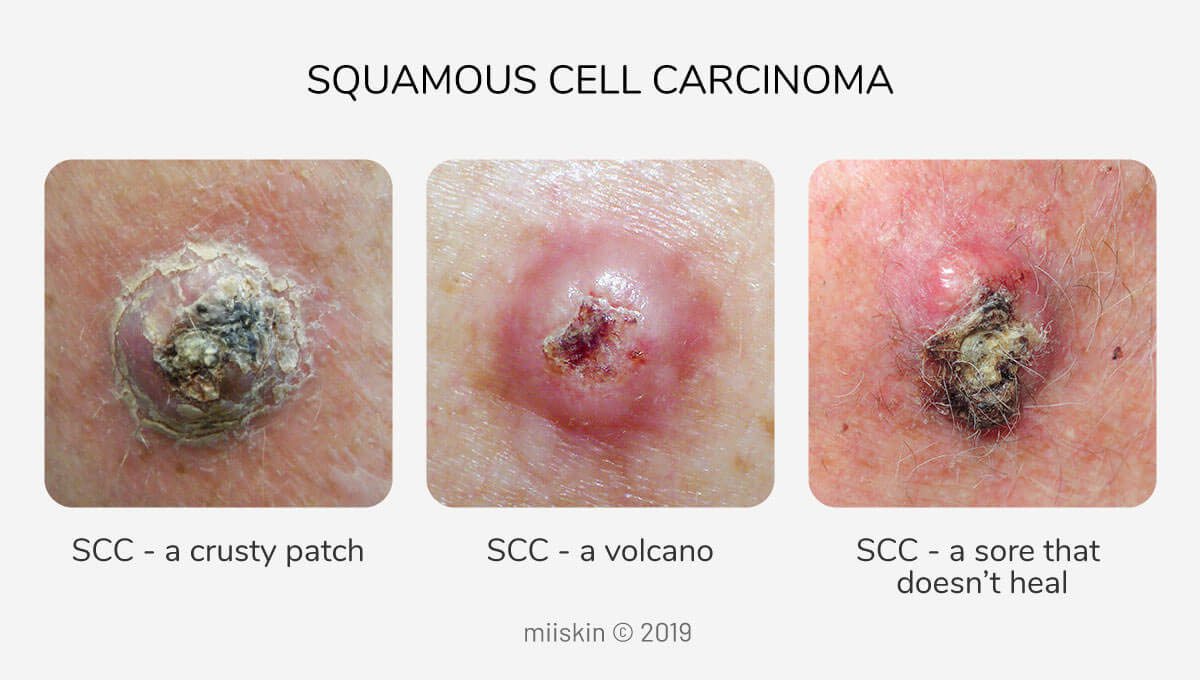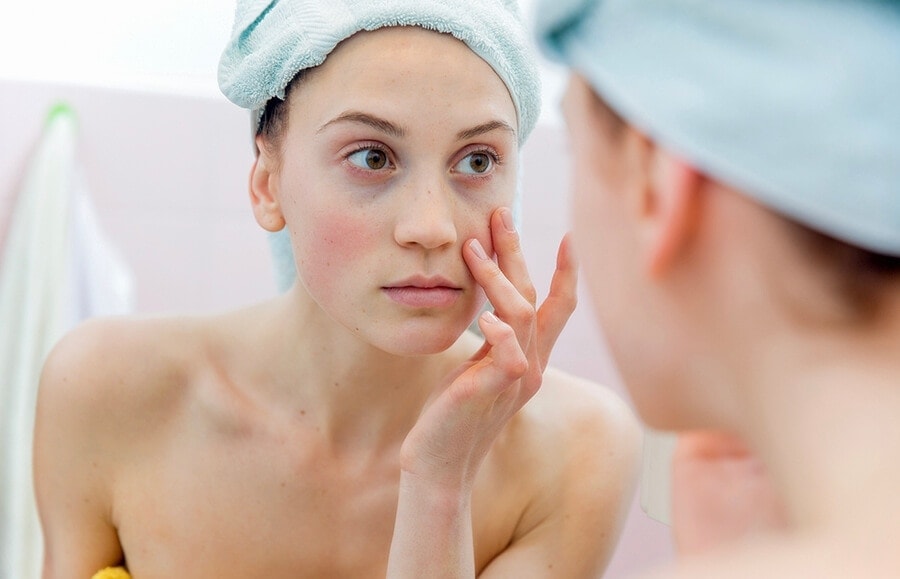Skin Cancer Pictures: What Does Skin Cancer Look Like?
Skin cancer images by skin cancer type. Skin cancer can look different than the photos below.
Jump to:
Basal Cell Carcinoma | Squamous Cell Carcinoma | Bowen’s Disease | Keratoacanthoma | Actinic Keratosis | Melanoma
Our commitment to producing high-quality content:
The information presented in this article is based on scientific research and the professional advice of our Content Medical Reviewers, who are experts in the field of Dermatology. How we write our content →
Skin cancer often presents itself as a change in the skin’s appearance. This could be the appearance of a new mole or other mark on the skin or a change in an existing mole.
Please remember that you should always seek advice from your doctor if you have any concern about your skin. Skin cancers often look different from skin cancer images found online.
Skin Cancer Pictures by Type
Skin cancer is the most common form of cancer. There are several different types of skin cancer with Basal Cell Carcinoma, Squamous Cell Carcinoma, Bowen’s Disease, Keratoacanthoma, Actinic Keratosis and Melanoma most commonly occurring.
Basal cell carcinoma is the most common form of skin cancer, and least dangerous whereas melanoma (often referred to as malignant melanoma) is the most dangerous type.
Below you will find skin cancer pictures of these six types, but remember that skin cancer should be diagnosed by a doctor. Comparing your skin lesion to skin cancer images found online cannot replace medical examination.
If you have any pigmented mole or non-pigmented mark on your skin that looks different from the other marks or moles on your skin, that is new or that has undergone change, is bleeding or won’t heal, is itching or in any way just seems ‘off,’ visit your doctor without delay – don’t lose time comparing your mole or mark with various pictures of skin cancer.
If you want to be proactive about your health, you may want to photograph areas of your skin routinely including individual moles or marks to familiarise yourself with the appearance of your skin (especially if you have any unusual looking atypical moles). A skin monitoring app may be a useful tool to assist in that process.
Basal Cell Carcinoma Pictures
Basal cell carcinoma usually appears in areas of the skin previously exposed to high levels of UV radiation such as the head, neck, ears and the back of the arms and hands. It is common in exposed skin of outdoor workers or people who have used sun tanning beds in the past.
As the basal cell carcinoma pictures below indicate, this type of skin cancer usually shows as a fleshy coloured bump that does not disappear over time and tends to grow slowly in size, eventually breaking down and ulcerating.
Below are pictures of skin cancer on the neck, face and trunk (from the left to the right). These images show common areas where basal cell carcinoma develops, but it can develop anywhere.
Basal cell carcinoma. The skin cancer pictures in this article were licensed from DermNet NZ
Squamous Cell Carcinoma Pictures
Squamous cell carcinoma also appears in areas most exposed to the sun and, as indicated in the pictures below, often presents itself as a scab or sore that doesn’t heal, a volcano-like growth with a rim and crater in the middle or simply as a crusty patch of skin that is a bit inflamed and red and doesn’t go away over time.
Any lesion that bleeds or itches and doesn’t heal within a few weeks may be a concern even if it doesn’t look like these Squamous cell carcinoma images.
Bowen’s Disease Pictures
Bowen’s disease is a type of superficial skin cancer that affects the upper layer of skin (sometimes even referred to as squamous cell carcinoma in situ, and intraepidermal carcinoma (IEC)).
Most often, this skin condition causes red (sometimes brown), scaly patches on the skin and usually develops on legs, head, neck, palms or soles.
The patches caused by Bowen’s disease tend to grow slowly and are effectively treated, but if left untreated, there is a small risk of developing into a more serious type of skin cancer, squamous cell carcinoma (SCC).
The most effective method of lowering the chance of getting Bowen’s disease is to limit your exposure to the sun.
In the photos below you can see examples of Bowen’s disease:
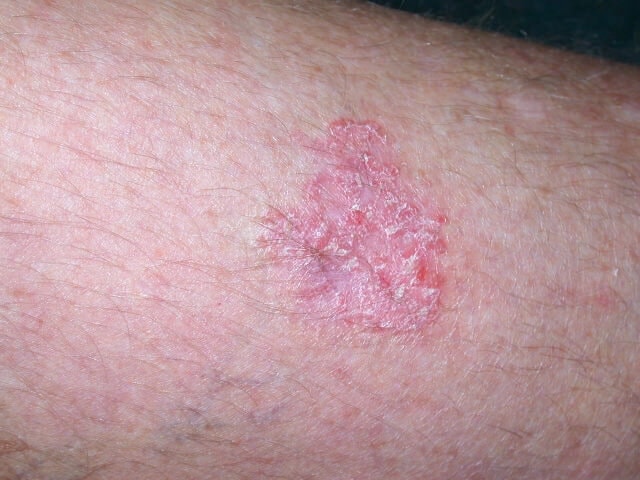
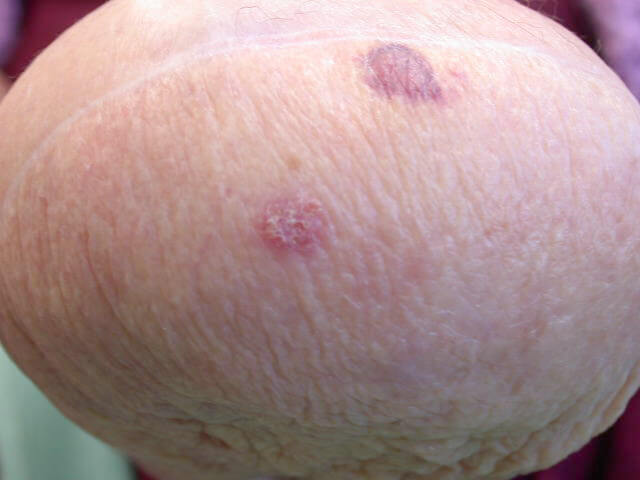
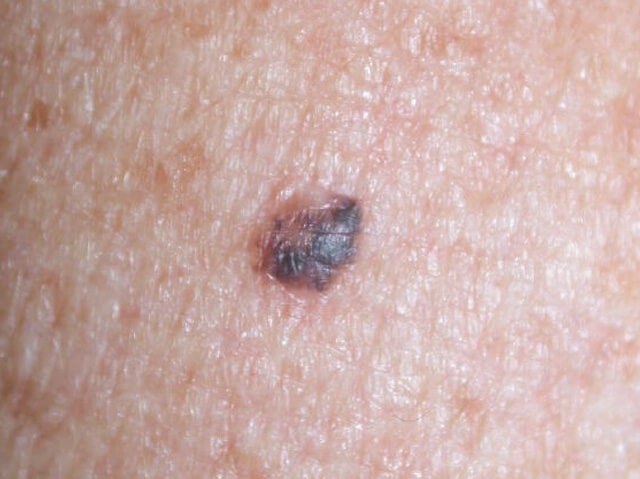
Keratoacanthoma Pictures
Keratoacanthoma often shows itself as a little volcano-shaped skin lesion that most often develops in sun-damaged skin. It grows rapidly for a few weeks to months.
Keratoacanthoma is most commonly found in older and light-skinned people and usually grows on the hands, arms, trunk and face.
KA’s are characterized as a type of non-melanoma skin cancer, squamous cell carcinoma. It is usually treated surgically.
Pictures of Keratoacanthoma are found below:
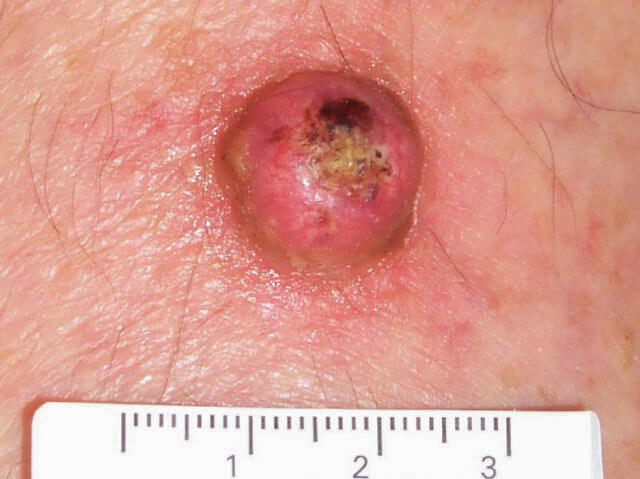
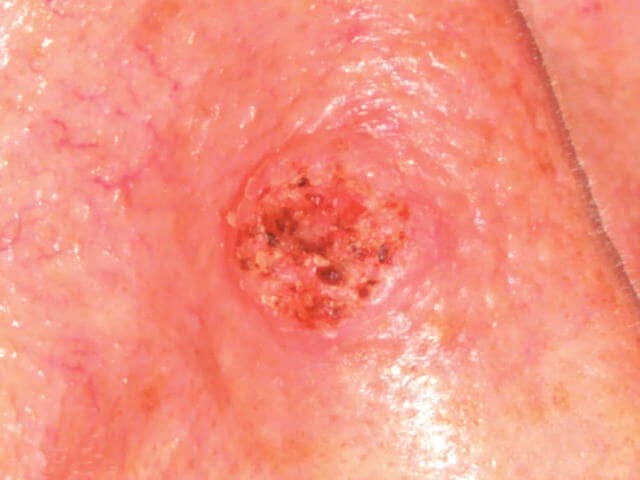

Actinic Keratosis Pictures
Actinic keratosis (AK) often looks like a small, rough, scaly patch on the skin. It grows slowly and takes years to develop. People over 40, who have fair skin and hair, and light-colored eyes (blue or green), are more likely to develop Actinic keratosis.
Actinic keratosis (AK) usually develops on sun-exposed areas, such as the face, neck, scalp, and the back of the hands.
The best way of lowering the risk of getting Actinic keratoses is also by reducing sun exposure.
AK patches are considered a precancer, because if not treated in time, they could develop into squamous cell carcinoma (SCC).
The following photos represent how some AK’s might appear on the skin e.g leg, nose, ear:
Actinic keratosis affecting the leg
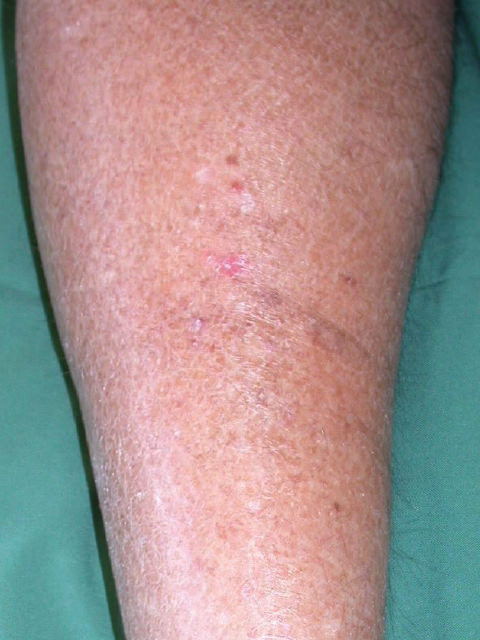
Actinic keratosis affecting the nose
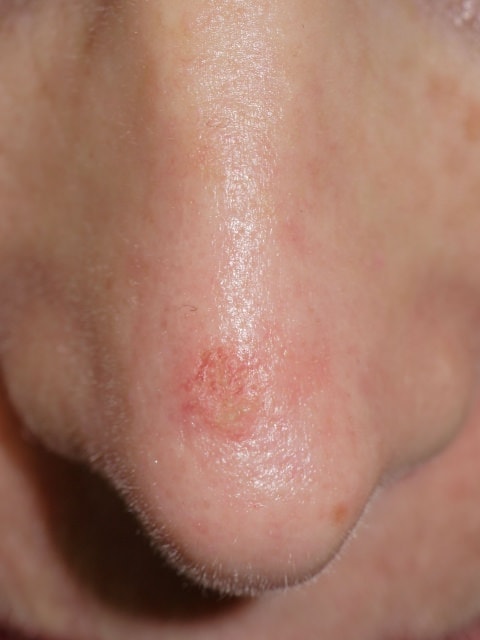
Actinic keratosis affecting the ear
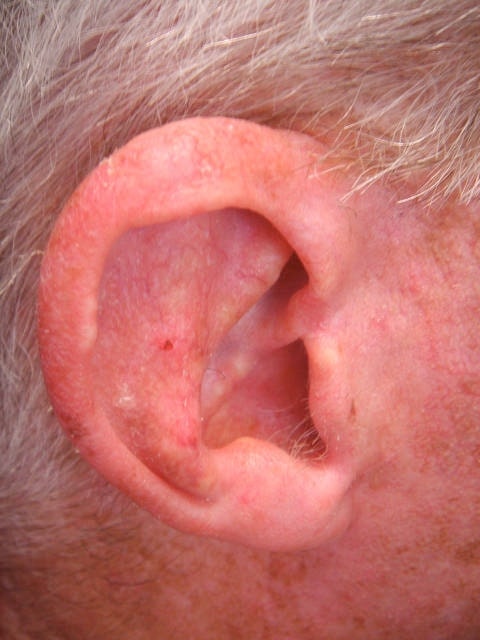
Melanoma Pictures
Melanoma (often referred to as malignant melanoma) is one of the more serious forms of skin cancer and sometimes arises from an existing mole on the skin. More commonly melanomas show up as new marks or moles on normal skin as is the case with the other types of skin cancer. Melanomas can appear anywhere on the body but they are most common in males on the back, and in females on the legs.
It is important to tell your doctor if you see any of your moles changing or any new marks or moles appearing on adult skin.
The skin cancer pictures below show that melanomas can appear in an area that has not had much UV exposure in a person’s lifetime, such as the sole of the foot.
Lentigo Maligna Melanoma

Melanoma – change in border

Melanoma – on the sole
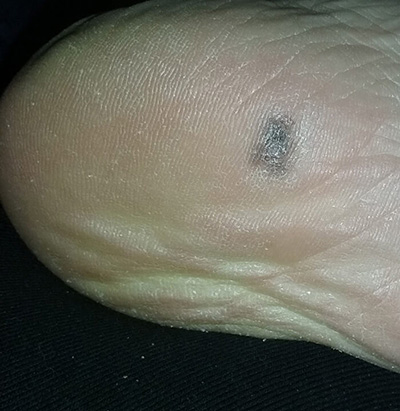
What Do the Early Stages of Skin Cancer Look Like?
As skin cancer is an abnormal growth of cells in the skin, getting to know your skin is important to catch any skin changes early. Any new spot or marks that are different from the other marks on adult skin – and any changing moles – are the most important early signs of skin cancer to look for.
How Do You Know If a Spot Is Skin Cancer?
To learn more you can read this article on the signs of skin cancer or this article on melanoma symptoms, but don’t forget to get any skin concern you may have checked out by your doctor.
You can also read our guide on how to check your skin regularly, if you want to learn more about how to form a skin checking routine for yourself.
Tracking Changes to Your Skin with an App
Some people find it helpful to photograph areas of their skin such as the back or individual lesions to be able to better spot any future changes.
Over the past years, smartphone apps that can help consumers track moles and skin lesions for changes over time have become very popular and can be a very helpful tool for at-home skin checks.
![]() This page does not replace a medical opinion and is for informational purposes only.
This page does not replace a medical opinion and is for informational purposes only.
![]() Please note, that some skin cancers may look different from these examples. See your doctor if you have any concerns about your skin.
Please note, that some skin cancers may look different from these examples. See your doctor if you have any concerns about your skin.
![]() It might also be a good idea to visit your doctor and have an open talk about your risk of skin cancer and seek for an advice on the early identification of skin changes.
It might also be a good idea to visit your doctor and have an open talk about your risk of skin cancer and seek for an advice on the early identification of skin changes.
![]() * Prof. Bunker donates his fee for this review to the British Skin Foundation (BSF), a charity dedicated to fund research to help people with skin disease and skin cancer.
* Prof. Bunker donates his fee for this review to the British Skin Foundation (BSF), a charity dedicated to fund research to help people with skin disease and skin cancer.
Consult a Board-Certified Dermatologist Now!

Download the Miiskin app to connect with independent, board-certified dermatologists who are licensed in your state. Answer a few questions, upload some photos and get a treatment plan in 1-2 days. Consultation price is $59 and medication renewals are only $39.
Online dermatology care is ideal for chronic dermatology conditions.


